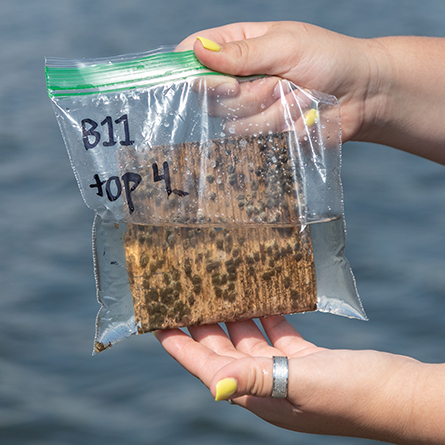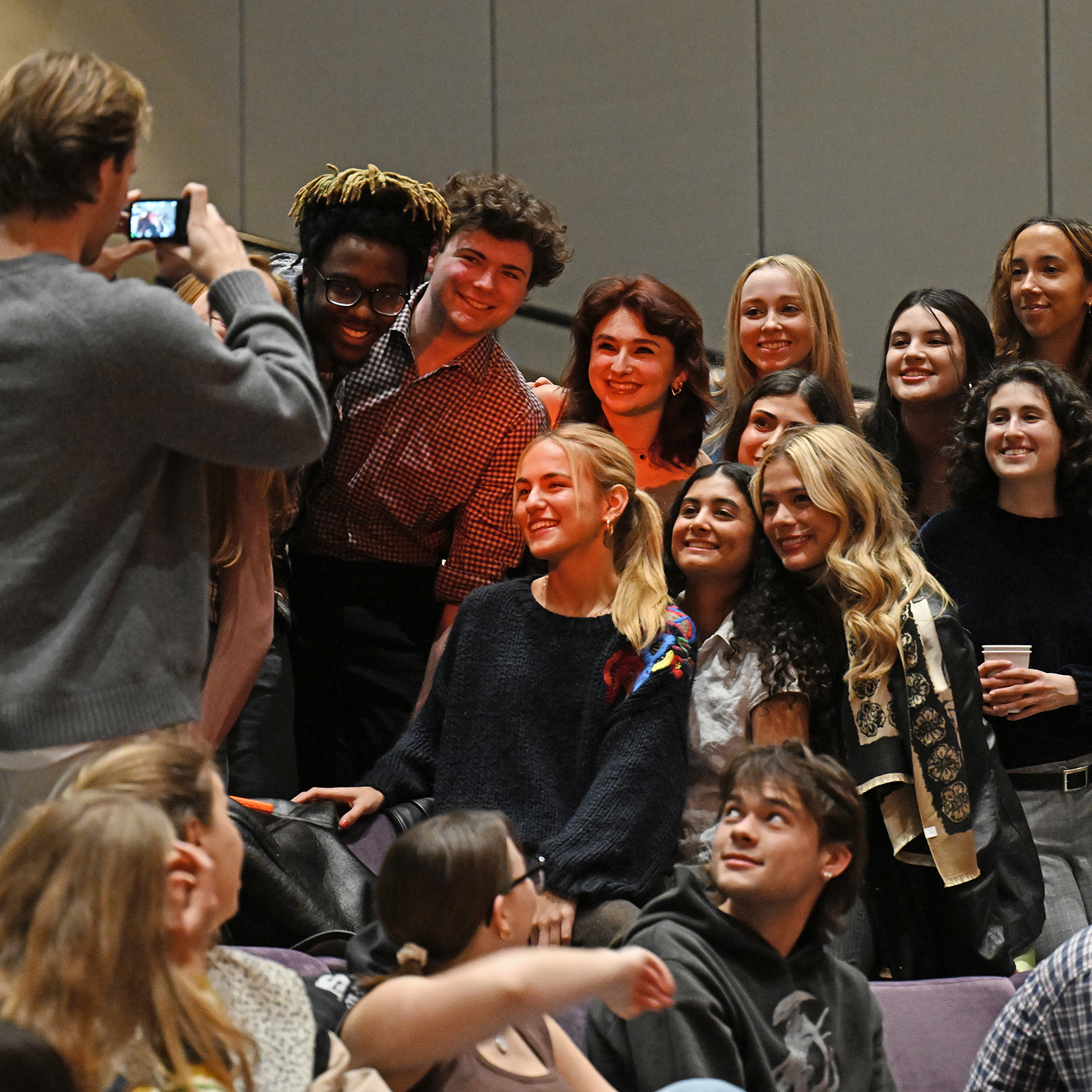
Justin Nwafor ’21 wins the 2021 Oakes and Louise Ames Prize
Justin Nnaemeka Nwafor ’21, an ACS-certified chemistry major and mathematics and physics double minor, was awarded the Oakes and Louise Ames Prize at Commencement for his honors thesis, “Why are Glycines 31, 33, and 35 Highly Conserved in all Fluorescent Proteins?” The work is a significant and thorough look at a novel question that impacts the general understanding of fluorescent proteins at the chemical level.
Named for the late president emeritus of the College and his wife, the Oakes and Louise Ames Prize is given to a graduating senior who has completed the year’s most outstanding honors study. The prize is offered by the trustees in recognition of the quality of academic achievement that Oakes and Louise Ames fostered during their 14 years of service to Connecticut College.
Since 2019, Nwafor has been working in the lab of Jean C. Tempel '65 Professor of Chemistry Marc Zimmer, conducting research focused on detailed characterization of the structure and function of fluorescent proteins, which emit light when excited and can be used in numerous ways to “light up” processes in the cell that would otherwise be difficult to see and track. Often referred to as the microscopes of the 21st century, fluorescent proteins have revolutionized the fields of biological and medical science and are used in a wide range of research, from imaging cancer cells to tracking the replication and migration of the COVID-19 virus through human epithelial cells.
Nwafor’s thesis work specifically examines the role of three glycines that are conserved in more than 90% of organisms with fluorescent proteins and investigates why these glycines are found in the same locations in such diverse organisms as jellyfish, corals and sea squirts. Nwafor used computational methods to determine the structural consequences of changing these glycines to larger, less flexible amino acids, using five different programs to prepare and hydrate the structures, find the lowest energy structures, run molecule dynamics, analyze the results and find water channels. Nwafor worked with two other undergraduate researchers to run 12 simulations, each of which took approximately one month and generated thousands of structures.
Nwafor’s experimental analysis suggests that the three glycines play a crucial role in the folding pathway of fluorescent proteins. As there is great general interest in how these important proteins function, the work will soon be submitted for publication in a peer-reviewed academic journal, with Nwafor as first author.
Associate Professor of Chemistry and Chair of the Chemistry Department Tanya L. Schneider said Nwafor’s work “reflects his deep engagement in the study of chemistry at Connecticut College and his collaboration with other members of the Zimmer research lab, and represents an unusually high level of scientific achievement for an undergraduate researcher.”
Zimmer, who served as Nwafor’s thesis adviser, said that in addition to working in his lab, Nwafor completed computational chemistry internships with Rosetta REU and with Pfizer, Inc.
“I have taught at Conn for 30 years and have had more than 80 research students, and Justin has the most computational chemistry knowledge and skills of any student I’ve ever had,” Zimmer said, noting that Nwafor is a first-generation college student, a Science Leader and a member of the varsity men’s basketball team.
“I nominated Justin for the Ames award because he has a graduate-level understanding of the project and techniques used.”
This fall, Nwafor will begin a post-baccalaureate research program at Johns Hopkins University, after which he plans to pursue a Doctorate of Medicine and of Philosophy.

